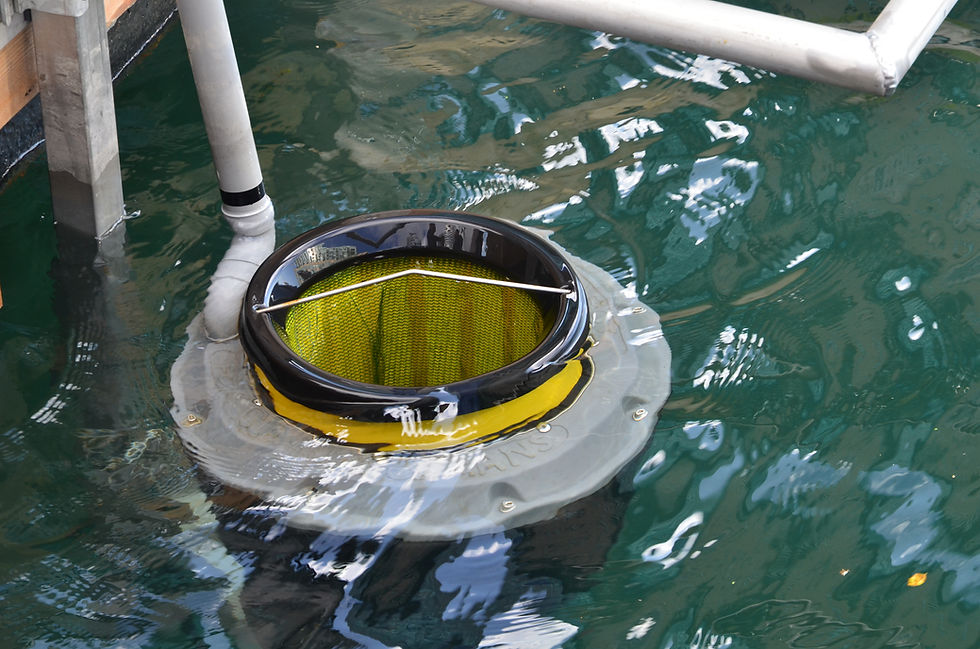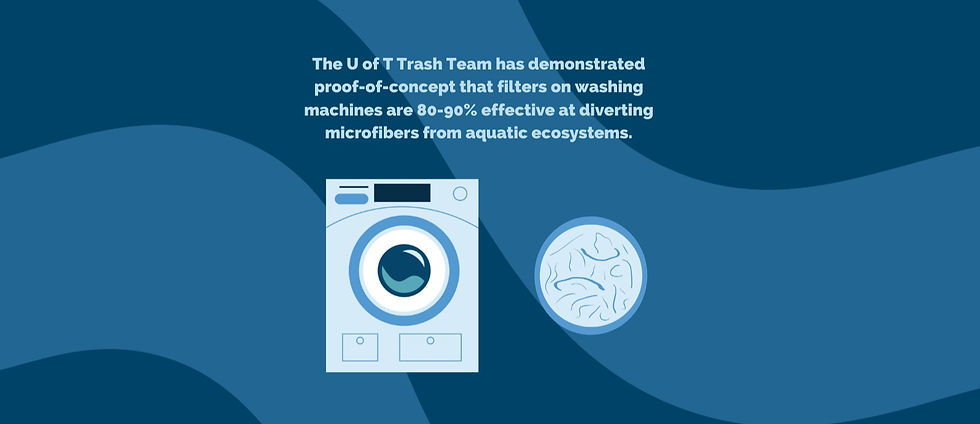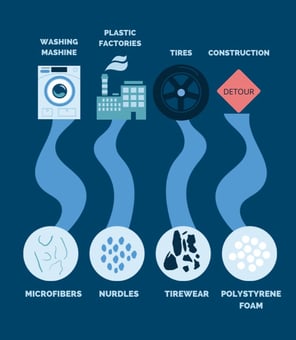Piecing Together Clues to Help Solve Plastic Pollution
Microplastics expert investigates local environments to inform national solutions

You’ve heard of a garbage bin, but what about a seabin?
Microplastics (pieces of plastic 5mm and smaller) have been found in all of Earth’s environments, including our oceans, and waterways. With over 20% of the world’s freshwater supply and approximately 7% of the world's renewable freshwater, Canada’s environment could be at risk.
To tackle plastic pollution in the City of Toronto, Dr. Chelsea Rochman of the U of T Trash Team and Ports Toronto are capturing waste in the waterfront using devices called Seabins. These Seabins trap debris and divert plastic waste away from the waterfront. “We are working to build a Seabin family”, says Dr. Rochman. The goal is to trap trash on the Toronto harbourfront which will, in turn, reduce hazards for shipping vessels and recreational boats, reduce the harm to biodiversity, and overall leave community members with a cleaner waterfront to enjoy.”
“We don’t want to have to cleanup. We want to prevent pollution upstream, but right now the tap is on, and the litter is coming out.” – Dr. Rochman
Seabins are also a great source of information. The trash they trap provides Dr. Rochman and her team with clues about the plastic’s abundance, origin, transportation, and fate. Knowing this information can inform solutions. The Seabin project has already identified plastic nurdles (small pieces of pre-production plastic pellets from industry) as a major type of plastic pollution in the harbour. They are also seeing input of plastic foam litter from construction.
This trash trapping project can also be nationally scaled to provide insight and inform solutions to other Canadian communities. With such early success, the Seabins have already been adopted by communities around the Great Lakes and inspired the International Trash Trap Network (ITTN), a network created to standardize plastic collection from traps and reporting through an app. Using the Data Trapper App (App Store/Google Play), the public can get involved by starting their own local community projects. “Through the ITTN, we hope to motivate global trash trapping to reduce plastic pollution, collect data to inform solutions, and increase waste literacy in communities.”
Ultimately, we need to turn the tap off at the source.
There is currently no sign of plastic production slowing down; in fact, it is ramping up. “While cleanups are a great interim solution, ultimately, we want to stop plastic pollution at the source,” Dr. Rochman explains. To identify solutions, we need to first understand the problem. “Hopefully, the information we gather from Seabins can help us prevent the need for Seabins in the future.” Similar data from other Rochman Lab and U of T Trash Team studies have been successful in doing just that.
The U of T Trash Team researched and demonstrated proof-of-concept (with Georgian Bay Forever) for a mechanism that is 80-90% effective in capturing fibers from washing machines.
“In wastewater treatment plants, we find mostly fibers,” Dr. Rochman explains. Wastewater treatment plants have yet to develop the capacity to trap all of these tiny, plastic fibers, so they make their way back into our clean water reservoirs. The U of T Trash Team researched and demonstrated proof-of-concept (with Georgian Bay Forever) for a mechanism that is 80-90% effective in capturing fibers from washing machines.

In industrial runoff, primarily pre-production pellets called nurdles are found. These pellets are intentionally manufactured as small microplastics and are later melted down and made into the plastic products we are familiar with. Unfortunately, nurdles can leak from storage containers during transit or be spilled from plastic plants into storm drains leading to lakes or coastal areas.
Dr. Rochman emphasizes that solutions for nurdle pollution must be negotiated within industry and policy, so her team has been working with industry and government to set standards for industry nurdle leakage. The work includes lobbying for regulating loss from industry, initiating audits, reporting spills, and ultimately creating legislation to hold industry accountable to the promises they’ve made surrounding nurdle pollution.
In urban runoff, microplastic pollution consists of a lot of tire dust. Dr. Rochman notes that plastic fragments from tires are a complicated issue because they are constructed with safety in mind making it difficult to look at other manufacturing options. It is unclear if the solution lies in collecting tire pollution from storm drains or if the solution lies in changing the construction of the tire. Thus far, they’ve been able to demonstrate that rain gardens and other bioretention cells can prevent tire particles from entering water bodies downstream.

Next up, Dr. Rochman’s team will investigate polystyrene (commonly known as the brand Styrofoam™) litter from construction sites in the summer of 2022. The team plans to reach out to construction sites to engage in collaborative solutions.
When investigating different paths of microplastics into the environment, Dr. Rochman and colleagues embrace the role of detective. Piecing together clues from plastics found in different waterways, she targets significant sources of microplastic pollution and designs targeted solutions.
To learn more about microplastic pollution in Canada and how you can get involved, join the conversation using the hashtag #BeatPlasticPollution.
